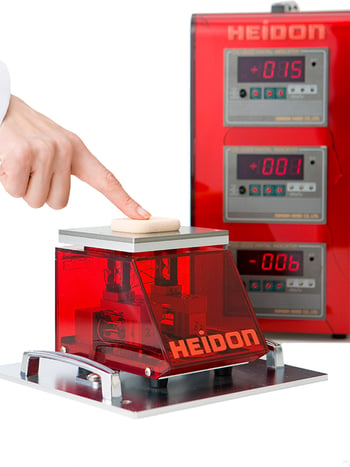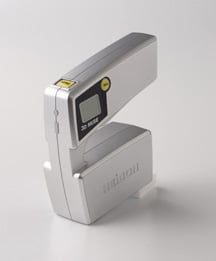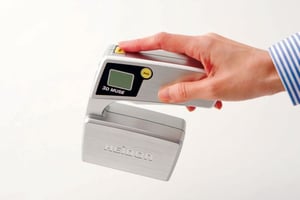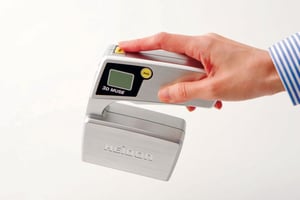 Unless people who wear or use cosmetics are also actively involved in its development, chances are they don’t give much thought to the physics of makeup and other cosmetic products.
Unless people who wear or use cosmetics are also actively involved in its development, chances are they don’t give much thought to the physics of makeup and other cosmetic products.
But, as product developers likely know, part of what many find captivating about physics is that it’s involved in everything—literally.
Those familiar with both physics and the application of cosmetics understand that even swapping out a makeup brush for a sponge applicator can impact the finish and lasting wear of cosmetics. Furthermore, the level of friction consumers use when applying makeup can greatly impact the overall quality of the makeup. If users don’t apply enough friction, makeup can be patchy and uneven, but too much friction can impact the outcome and possibly even irritate the skin. Even gravity can impact long-lasting wear.
A cosmetic’s density can affect how it looks and feels and how well it performs. That’s why products like foundation are denser or thicker than cosmetics like tinted moisturizers, which are lighter and far less dense.
This is where friction testers and tribometer instruments can make all the difference during the development and quality control stages. By taking a detailed, scientific look at the friction of cosmetics, developers can evaluate and improve how products look and feel, how long they last, and overall customer satisfaction and loyalty.
Examining the Texture and Friction of Cosmetics
As you likely know, a great deal of work goes into developing the proper friction for each cosmetic product. Take lipstick, for example. Lipstick is analyzed through the domain of tribology, which looks at how surfaces interact with one another in terms of relative motion. In other words, lipstick is assessed based on its level of friction and lubrication, as well as how it wears. A friction tester or tribometer would evaluate the amount of friction between lipstick and a user’s lips.
When evaluating the friction of a lipstick, higher forces or levels of friction equate to a harder lipstick that is more adhesive—and longer lasting. But lower forces and levels of friction signify a softer lipstick that is less adhesive but glides onto the lips smoothly and easily.
Why does this matter? For consumers, it’s all about the experience and feeling of wearing lipstick. Is it too slippery or too sticky? Does it transfer easily and/or rub right off? A lipstick that is too firm and too adhesive can signal an effortful application or even an unpleasant feel during wear.
But it’s not just lipstick that is impacted by friction. The frictional properties of any cosmetic product can affect the application and the finish—but also things like the level of UV (ultraviolet) protection to guard against damaging sun exposure, as well as:
- The friction and staying power of oils, lotions, and serums
- The friction and adherence of powder-based cosmetics
The Benefits of Friction Testers, Wear Analyzers, and Tribometers
Now, lipstick and other cosmetic products go beyond just skin deep, combining aesthetics and science. Equally important to using color theory to attain the right shade is using the right instruments to arrive at a quality chemical composition, ensuring that the cosmetics aren’t just appealing and high-performing for the user.
Before using friction and wear analyzers, cosmetic and beauty brands had very little to aid in the precise development of new products. But today, friction testers, wear analyzers, and tribometers have taken much of the guesswork of making quality products with a favorable sensory perception.
With laboratory quality instruments like the Heidon H94 Portable Friction Tester from Kett, cosmetics can much more accurately assess the quality of a product for its friction dynamic, even at the early stages of development, including factors like:
- Smoothness or hardness
- Wearability
- Comfort and feel
- Static friction coefficient
- Kinetic friction coefficient
- Viscosity
This H94 Portable Friction Tester is the first of its kind to test substances like liquids, films, and other soft solids, providing an accurate, reliable path for cosmetics developers to evaluate new products. Similarly, the Heidon H37 3D Portable Friction Tester is handheld and ideal for analyzing formations anywhere from the laboratory to the manufacturing floor to evaluate products for their friction properties.
Finally, the H33 Portable Tactile Meter stands out for its advanced capabilities in analyzing cosmetic products, offering precise measurements of friction and wear properties to enhance user experience and product durability. Its innovative design and easy-to-use interface allow for comprehensive testing, ensuring cosmetics meet both aesthetic and functional standards before reaching consumers.
Discover for yourself how Kett can revolutionize the way cosmetics are developed and function. To learn more, connect with our team of expert engineers today.


